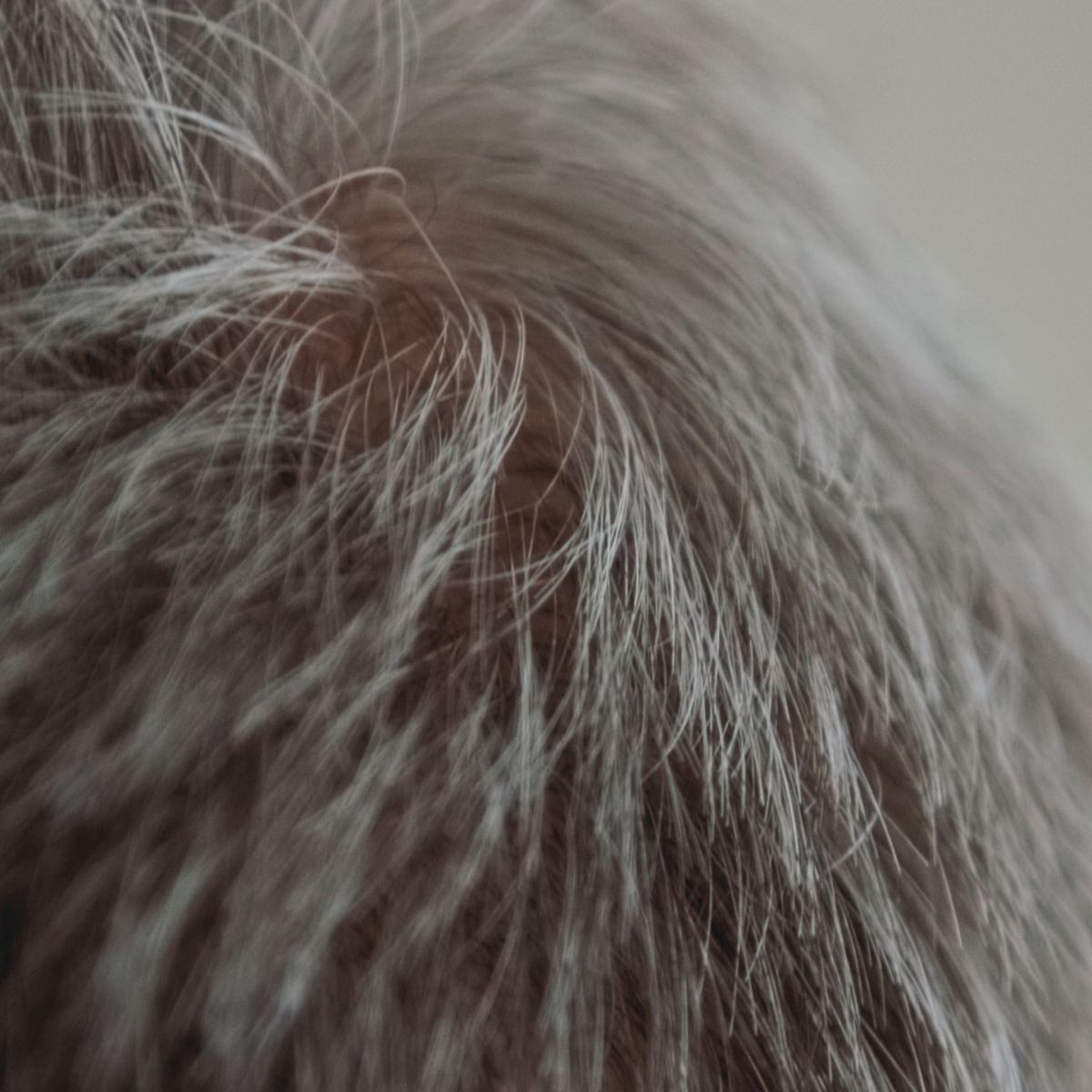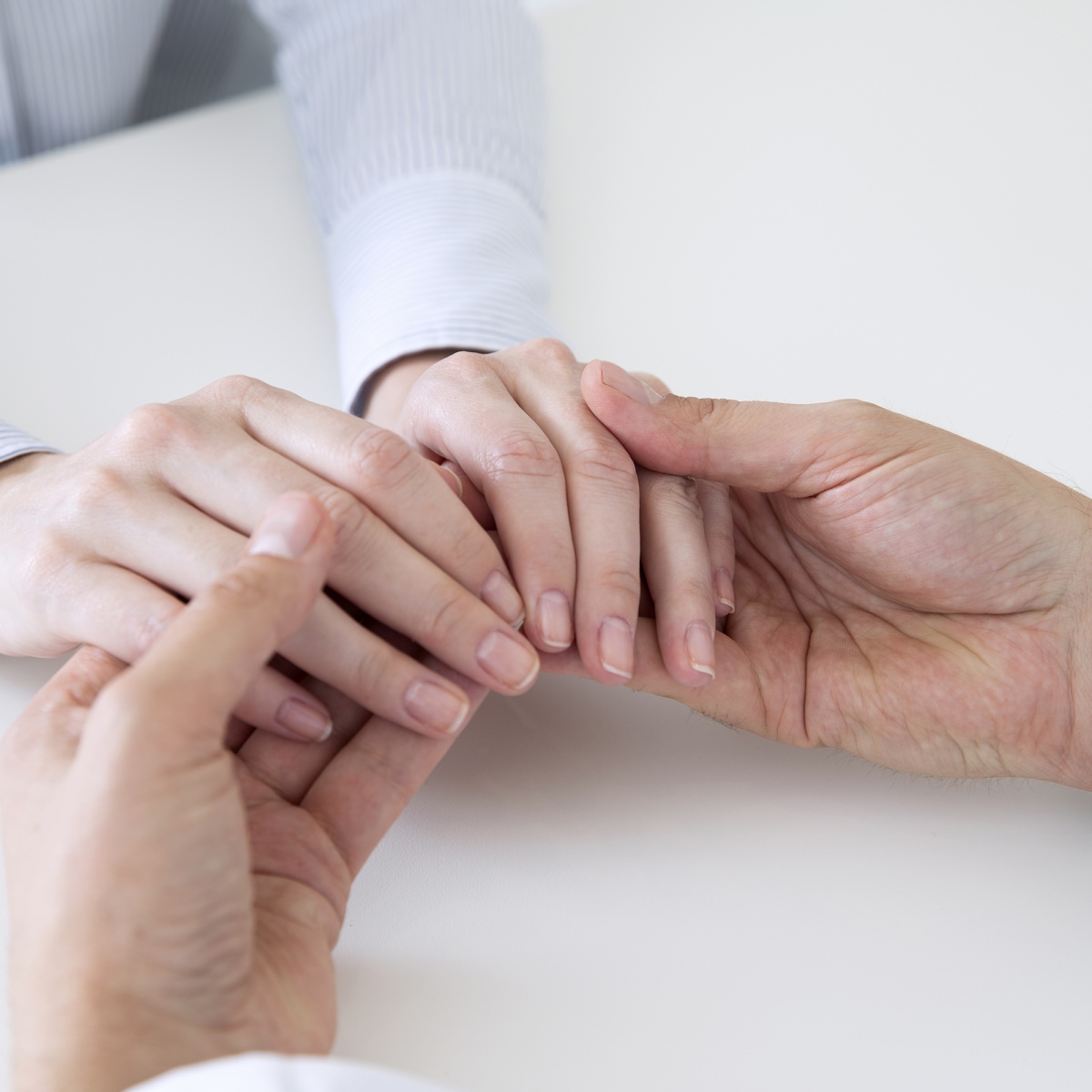Hair and nails Vienna

Hair
Full, healthy hair is one of the most sought-after beauty features and conveys youth, attractiveness and vitality.
Although hair loss does not cause physical pain, the loss of hair has an immense impact on the psychological well-being of the patient. When clarifying any form of hair loss, an accurate diagnosis of the cause should first be made.
In addition to the patient’s history, the scalp and hair are clinically examined in detail with the aid of a dermatoscope. In addition, laboratory findings and tissue samples might be taken.

Androgenetic alopecia
Genetic factors affect the way our hair follicles react to our hormones. In some people, the hair follicles are overly sensitive to the hormone testosterone and this causes hair thinning and hair loss. As testosterone is more prevalent in men, it is mostly men who experience hair thinning and hair loss, however, this condition can also affect women.
While Androgenetic Alopecia is often associated with older men, it can happen at any age and is usually already visible among men at a younger age. The condition is reversible with hormonal therapy and there are now effective medications.
Dr Gregor usually uses combination therapies to generate the maximum success in combating hair loss
Alopecia areata
In this form of hair loss, the patient’s own immune system turns against the hair root, the hair falls out, and circular areas without hair or thin white hair may develop. Hair loss can affect the entire head (alopecia areata totalis) or even all body hair, including eyelashes, eyebrows and beard (alopecia areata universalis). Not only adults, but also children are often affected. The hair can grow back spontaneously at any time, as soon as the immune cells have disappeared from the hair roots. The challenge in the therapy of this disease is that this disease is not life threatening and does not cause pain, but the hair loss is often perceived as very traumatic for those affected and can therefore lead to severe psychological stress. The question often arises as to how far treatment should go for a disease where the risk of side effects may not be justified by the burden of the disease. This decision must always be made on an individual basis, as the level of suffering and acceptance of the disease varies considerably from patient to patient.
In the treatment of the disease, injections with cortisone are used if the disease is mild. In the case of more severe infestation, brushing with a substance called DCP that creates eczema on the scalp and thus frees the hair roots from the inflammatory cells, which inhibit hair growth, can be performed. Therapy both with oral cortisone and, as recently clinically proven in several studies, janus kinase inhibitors (Baricitinib) are also very effective. In rare cases, other immunosuppressive therapies are used.
Scarring hair loss
Far less common, but no less distressing, are scalp diseases in which inflammation causes permanent damage to the hair roots and scarring.
In these diseases, it is important to stop the inflammatory process and thus the scarring and permanent hair loss as soon as possible.
Scarring hair loss diseases are Lichen Planopilaris, Folliculitis Decalvans and Perifolliculitis Abscedens et Suffodiens.

Nails
Changes of nails and hands are immediately noticeable by our surrounding. Thus deformities and discolorations of the nails can be very distressing for affected indivuals. The underlying cause of nail changes and deformities needs to be diagnosed, before the appropriate treatment can be administered. The removal of benign and malignant skin growths in the area of the nail is usually performed under local anaesthesia on an outpatient basis. In addition to the complete removal of tumors, the main focus is on a surgical technique that is as gentle as possible and ideally preserves the nail in its entirety.
Ingrown nails in the area of the big toes are not uncommon. They can be caused by improper pedicures, bad footwear and anatomical malposition. When the lateral nail edge grows into the skin deeper than normal, inflammation and pain develop. Often bacterial and purulent infections also occur. This pain can lead to real limitations in daily life.
Primarily, an attempt can be made to make the nail grow out by repeatedly inserting gauze strips or splinting with plastic tubes. A faster solution here is a procedure called the phenol matricectomy, in which the part of the nail plate that grows inward too deep is removed and regrowth is prevented by ablating parts of the nail root with phenol. Inflammation and pain improve after the procedure immediately. Infrequent side effects after the procedure include temporary pain, redness and swelling.

